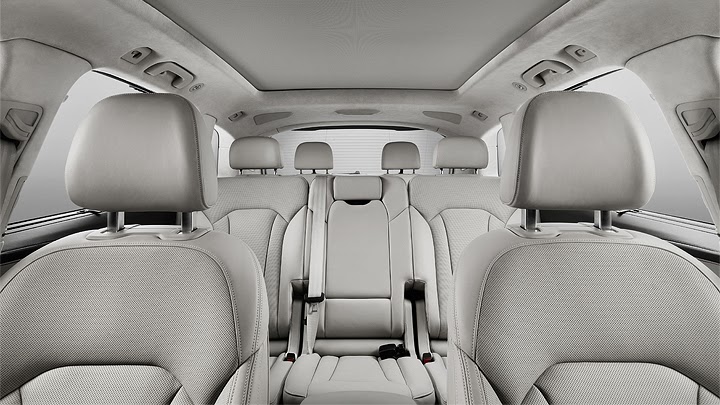
Porsche managed to turn Cayenne almost as luxurious and powerful as its signature coupés and roadsters, despite the plethora of complaints which purist enthusiasts make to this day. Volkswagen, in turn, established Touareg as a luxury automobile created by a generalist company, in an attempt to join the best of two worlds. The PL71 platform also spawned an Audi SUV, a few years later, but Q7 had a somewhat tougher life. Being a fancy SUV with people-hauler orientation meant entering one of the most competitive car markets of the latest years. The complete lack of tradition in a new segment is always a problem, as well, but the biggest barrier to this model’s success is actually related to its genetic structure.
Since no company would like such project to fail, the Germans decided to equip their SUVs with off-road abilities good enough to compete with models like BMW X5, Jeep Grand Cherokee, Land Rover Range Rover or Mercedes-Benz GL. The mission was accomplished, indeed, but there was a drawback which the first years of sales proved to be quite inconvenient: this purpose required a stronger structure, with much heavier components than those used by an urban car. Given that most of these cars aren’t driven through paths rougher than gravel driveways, it didn’t take long for Volkswagen to consider these underpinnings unnecessary. Since Cayenne and Touareg only had to maintain the good work, their new phase came earlier. Q7, in turn, received a lot of work so as to deserve a second chance.






Audi’s intentions are made clear from the very first sight: the new Q7 resembles a station wagon more than ever. In what is a clear shot specially against Land Rover and Mercedes-Benz’s competitors, the new vehicle brings a set of new design tricks: smoother roofline, stronger creases and curves, more imponent fenders, and well-placed inserts made of matte aluminum. Not to mention Audi’s omnipresent elements, such as all-LED front and tail lights and the front grille inspired by the Crosslane Concept. Everything intended to make the car look longer, wider and shorter, even though the actual changes weren’t expressive. The biggest of those lies at the engine, whose position was lowered: Audi states it was the responsible for taking the car’s center of gravity down by 50 mm.
Opening the doors reveals a whole new dashboard, whose horizontal elements intend to make the room look wider than it actually is. Those who like colorful rooms might go away, just like from pretty much any other Audi vehicle, but it gets really hard to resist if you give it a second look: the list of interesting features includes a 7” screen on top of the dashboard, which is operated through a touchpad to control the MMI infotainment central; the stunning 12.3” display which works as the instrument cluster; built-in 4G LTE connection dedicated to the onboard Wi-Fi; LATCH child-seat anchors now offered in all passenger seats; power tailgate with foot-activated opening; and the front air intakes hidden in a horizontal element very similar to that of the new Volkswagen Passat.






Like what happened with most pick-ups and SUVs released in the past few years, the new platform was responsible for a massive weight reduction. Audi took advantage of this at Q7’s new engine list: the weakest one is now a four-cylinder, turbocharged 2.0 good for 252 hp. The next options are two carried-over turbocharged 3.0-liter V6 units: you’ll get 272 hp with diesel and 333 hp using gasoline. Another benefit from the modern times is the adoption of a hybrid version: an electric engine is paired to a diesel-burner V6, so as to deliver 373 hp and 516 lb-ft. Under the name of e-tron quattro, this Q7 goes from 0 to 100 kph in six seconds and uses an eight-speed automatic gearbox. This level of performance makes it the SUV’s fastest variation.
Other interesting novelties come from the technology department. Performance enhancements are applied by torque-vectoring system, electronically-controlled differential, and the optional rear-wheel steering, which can be used at both high and low speeds – to help at highway driving and parking. Another group regards safety, including all the conventional electronic systems and some new ones which Audi expects to offer in the near future. The coolest one, in turn, is the semiautonomous: after a lot of experimentation, the new SUV can control its own throttle, brakes and steering at highways (at up to 37 mph); take a trailer to the exact spot defined through the MMI controller; and warn if the driver steers in a way that may lead to contact between car and trailer. All this goes on sale in a few months.